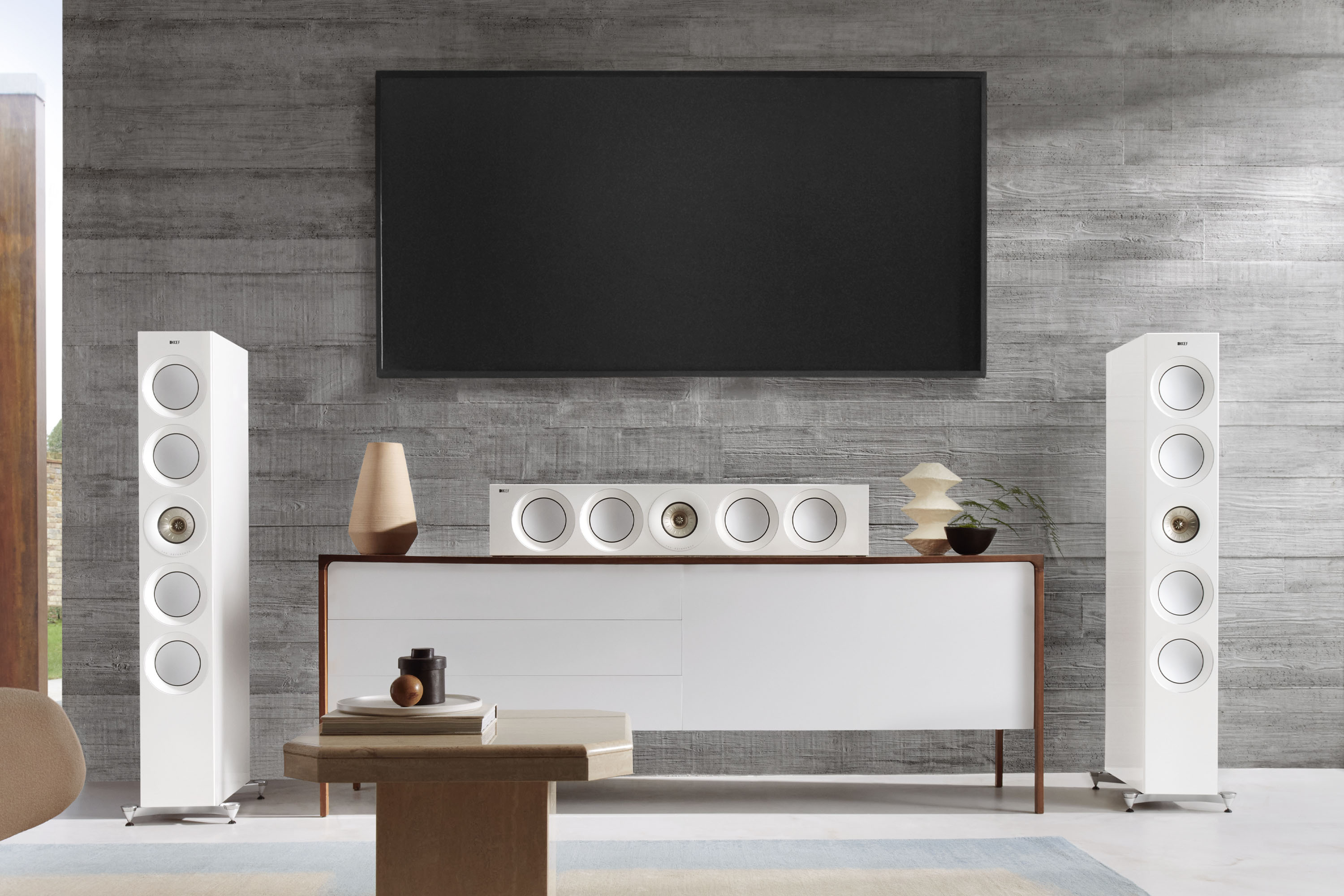No matter how hard you try to avoid it, your room will always have an effect on your audio. But with a little experimentation, you’ll be able to make it work in your favour. The most important thing you need to consider is the positioning of your speakers in relation to where you’re listening from. When setting up your entertainment space, think about that before anything else. Also be sure to consult your speakers’ user manual for optimal positioning tips.
To help you make the most of your speaker placement, we’ve put together a few tips and recommendations.
1. Your speakers should be placed between 1800mm and 2400mm apart, depending on their size. We also advise you to make sure there’s a wall or boundary behind them. The prime position for optimal listening will then be the same distance from the speakers as they are apart, forming an equilateral triangle. With KEF’s Uni-Q technology, however, the “sweet spot” for the best stereo experience is broadened considerably, giving you more versatility than regular set-ups.
2. For the best low-frequency responses, experiment with the distance between your speakers and the wall behind them. Typically, optimal distance is between 300mm and 1000mm, and both speakers should be equidistant from the wall.
3. Avoid placing your speakers too close to side walls.
4. For optimal stereo imaging, the left and right side walls should be equal distances from the loudspeakers, and the surface should be made of the same materials.
5. The optimal distance to the side walls from the speakers will vary depending on the room’s audio environment. Proximity to the side walls can create an imbalance in the timbre of the speakers. On the other hand, a complete lack of side walls could result in a very small stereo image. This is why experimentation is key.
6. If you’re going to acoustically treat your room, think of diffusion instead of absorption. Absorption may quiet some reflections, but at the cost of making your room sound dull and lifeless. Remember: a little reverberation is a good thing.

7. Toeing-in your speakers may help with their high-frequency response, as well as the perception of the stereo image - just make sure you toe both speakers equally. KEF’s Uni-Q technology means that balance won’t suffer if you move off the equilateral triangle, so keeping the speakers flat may actually be an excellent solution for rooms that are a bit too lively. Again, experimentation here is key.
8. Use a tape measure to make sure all your distances are equal. Our brains are very sensitive to the differing arrival times of sound to our ears.
9. Bass traps can help - but only if they’re done right. They can do wonders to increase low-frequency responses in a room, but if not constructed correctly, or if not the right size, a bass trap can do more harm than good. Remember that standard rooms don’t have just four corners, they have 12, and each one can affect your bass response. Soft furnishings and heavy drapes can act in the same way, so try to avoid hard surfaces and too much glass.
10. If you’re not happy with the sound in your entertainment space, you may need to start over and take a different approach to your set-up. Change your room around - remember that your listening position is just as important as your speakers’ position, and that every element and surface in your room plays a huge role in your overall sound.
Want to add more bass to your entertainment set-up? Discover how to make a subwoofer work for you - without upsetting the neighbours.
Find My Retailer
To add high-fidelity sound to your set-up, book a demo with your nearest KEF retailer.



